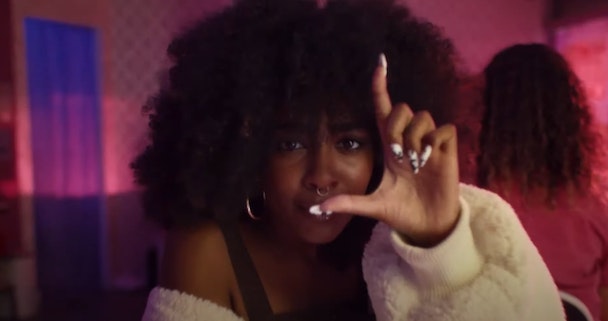How Asos is using YouTube for long-term brand building
The fast-fashion giant has admitted that its reliance on short-term, performance marketing hasn’t worked. Now, as it invests more in brand-building activity, YouTube has become the surprising channel of choice.

Asos uses YouTube to speak to a generation that is socially conscious and diverse / Asos
Like many businesses, Asos has not been sheltered from the rough economic headwinds. In its most recent earnings update, it reported a £32m pre-tax loss and rocky sales growth. As part of the recovery plan, chief executive José Antonio Ramos Calamonte stated that the company has for too long focused too much on performance marketing, thus ”leaving insufficient spend focused on driving longer-term brand awareness.” Now, a marketing rethink is underway.
As part of this rebalance from short- to long-term marketing, the online brand is using YouTube to experiment with a storytelling approach that is being led by global brand creative director John Mooney.
The first task was to get a better understanding of its audience and the findings came back showing that (unsurprisingly) it tends to skew young, with its fans being environmentally aware and keen to see brand values relating to equality and diversity.
But Google also found that brands are often reticent to share their commitments to equality for fear of making mistakes around identity and representation. “Some advertisers and media buyers have responded to this anxiety by restricting where people can find their content,“ its report said.
That reticence from rivals to turn to channels like YouTube to communicate with potential consumers about those issues has left the door open for Asos. “We need to make sure that the people we are going to talk to obviously adhere to our principles,“ says Mooney. “We have our internal values of being authentic. We are laser-focused on that 24-25 year old consumer being the archetype of our brand.”
To that end, the influencers with which Asos partners are often musicians and creators at the start of their careers. Noting that the old Asos magazine once featured up-and-coming artists, Mooney says Asos’s presence on YouTube allows it to work with creators that lend the brand authenticity in its marketing messages.
As an example, Asos’s YouTube strategy means partnering with creators including Milena Sanchez, whose life as a bisexual woman speaks to the inclusivity Asos wants to get across to its audience.
For brands like Asos, getting communications around topics such as sustainability right could be existential. In light of Asos’s latest results, the Chartered Institute of Marketing’s chief exec Chris Daly said: “We know that consumers are increasingly skeptical of brands’ sustainability efforts, with our research finding that 63% believe many brands only get involved with sustainability for commercial, not ethical, reasons. Building consumer trust in these challenging times is a prerequisite for sustained success, so it’s essential that Asos’s next steps are in the right direction.”
Phil Miles, the managing director of YouTube Sales, notes that YouTube as a platform for creators is allowing well-established brands the opportunity to speak to new audiences. That opportunity, he says, is in changing how those brands commission content beyond YouTube’s boundaries. He cites Sky’s partnership with footballer turned YouTuber Ben Foster as an example: “TV and the way people want to consume content is being influenced in mass movements by lots of YouTube, Tiktok and other platforms effectively.”
Mooney says that while YouTube and Google’s size and scale are vital for Asos as it fends off competition in the UK from global brands, it is the platform’s creator ecosystem that outperforms when it comes to marketing efforts. And, according to YouTube’s own research, that impact is just as visible for smaller firms. 75% of small to midsize companies with a YouTube channel say it has played a role in helping them grow their customer base by reaching new audiences.
Mooney points to the Sidemen Charity football event, created with YouTube in mind, as an example of how to create niche content that nevertheless scales: “Some people think it is a bit of a niche audience, but it’s humongous. It’s obviously very much bespoke for the YouTube audience, which doesn’t really exist on different channels, so therefore there’s something kind of special about it.”
He says that the ability and propensity for YouTube creators to baton pass and highlight other creators is a core part of the appeal for Asos. As it seeks to tout its credentials on issues of identity and sustainability, recruiting those new creators who can speak to the multifaceted audiences online is paramount.
